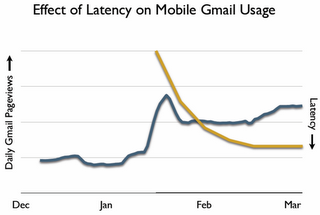Those developers looking to Android as an open alternative to Apple’s unclear App Store rules might be alarmed to hear about an Android developer with a similar tale of rejection woe.
 Nathan Freitas built a simple Android application using the phonegap framework. The application provides a version of his blog as an application that people could download for free. He wrote about the application features, provided some screenshots, and described his motivation on his blog:
Nathan Freitas built a simple Android application using the phonegap framework. The application provides a version of his blog as an application that people could download for free. He wrote about the application features, provided some screenshots, and described his motivation on his blog:
“To be honest, I don’t really want or expect random people to download my app… I just want it there so I can demonstrate the possibilities of linking together a few cool pieces of tech to build a rich mobile application….”
His application was in the Android Market for a time, but has now been suspended. Google’s form letter says that it has been “removed from Android Market due to a violation of the Developer Content Policy”
Nathan links to the relevant policy sections and as far I can see, his application doesn’t appear to violate any of them. He writes:
Now, I’ll admit my app is a bit pointless, some may mistake it as shameless self-promotion, but in truth, it was meant as a proof of concept for gluing together the awesome Phonegap SDK (a mobile web appstack enabler) with WordPress and a mobile-friendly template.
Amazing how much that sounds like the developer of the fart application for the iPhone that was originally rejected for not having enough utility. He said he knew it was a juvenile application, but that it was well done and meant to be fun.
It will be interesting to see if there is any appeals process for suspension from the Android Market. My experience with Google’s support has been atrocious even when I’m playing money Google money for an AdWords campaign. I can’t imagine what recourse you would have for a free application by a small developer.
The silver-lining for Android developers is that unlike the iPhone, you can still distribute your application outside of the Android Market. There’s something to be said for that. But you have to wonder how well an application will do outside the Android Market.
In the same way that Apple’s rejection of the fart application for its “utility” gave iPhone developers pause, the Android Market rejecting this blog application for unclear reasons should give Android developers something to think about.
 Nathan Freitas built a simple Android application using the
Nathan Freitas built a simple Android application using the 